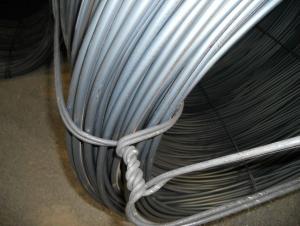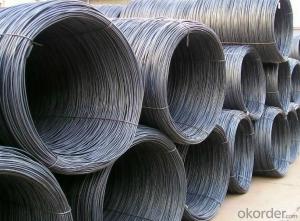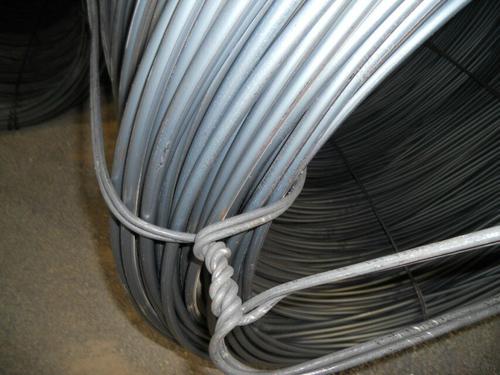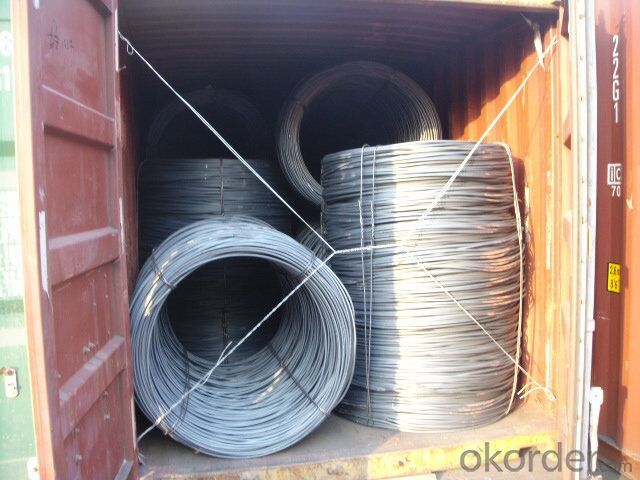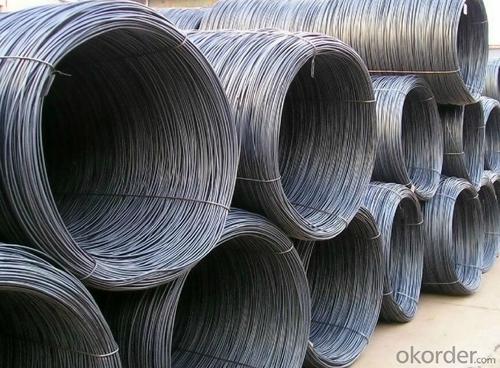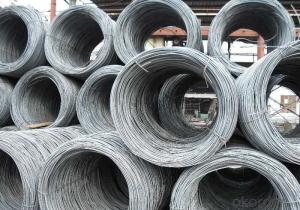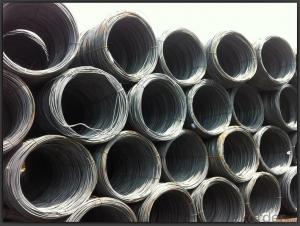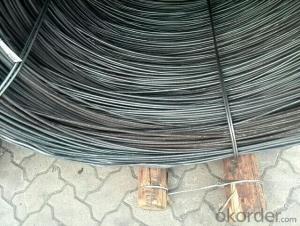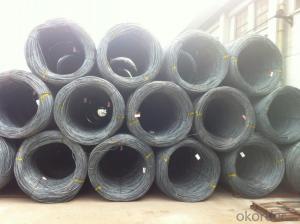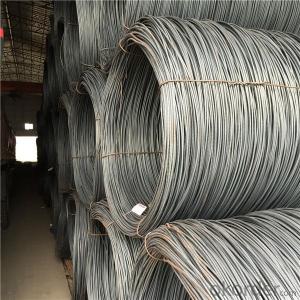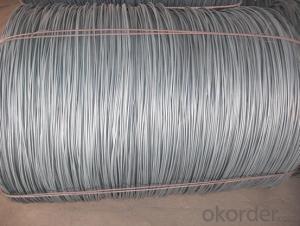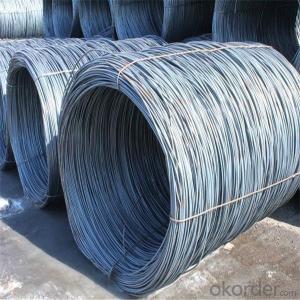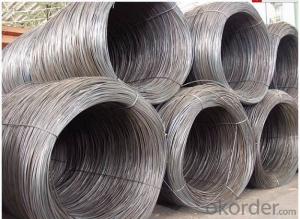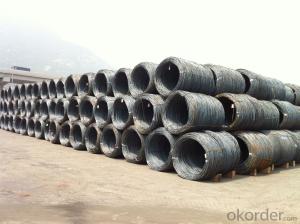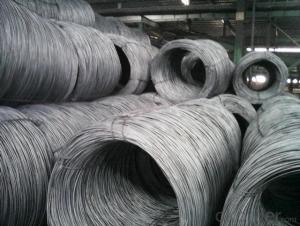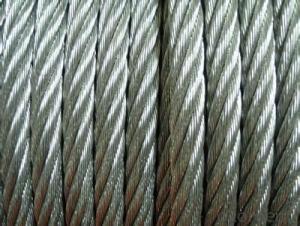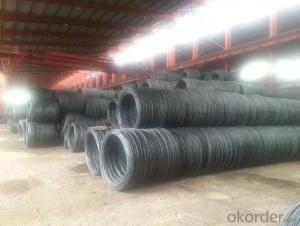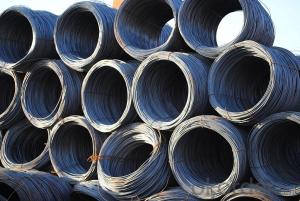Steel Wire Rod from 5.5mm to 14mm thickness Cold-heading
- Loading Port:
- Tianjin
- Payment Terms:
- TT OR LC
- Min Order Qty:
- 30 m.t.
- Supply Capability:
- 100000 m.t./month
OKorder Service Pledge
OKorder Financial Service
You Might Also Like
Specification
Product Description of Steel Wire Rod from 5.5mm to 14mm thickness Cold-heading
OKorder is offering Steel Wire Rod from 5.5mm to 14mm thickness Cold-heading at great prices with worldwide shipping. Our supplier is a world-class manufacturer of steel, with our products utilized the world over. OKorder annually supplies products to European, North American and Asian markets. We provide quotations within 24 hours of receiving an inquiry and guarantee competitive prices.
Specifications of Steel Wire Rod from 5.5mm to 14mm thickness Cold-heading
Steel Grade: Q195/235, SAE1006-1018B
Standard: ASTM, GB
Diameter: 5.5mm, 6.5mm, 7mm,8mm,9mm,10mm,12mm,14mm
Diameter tolerance: ±0.3mm
Type: in coil, coil weight around 2MT
Place of Origin: China Mainland
Surface: round, no twisted, light and smooth
Chemical Composition of Steel Wire Rod from 5.5mm to 14mm thickness Cold-heading
Trademark | Rank | Chemical composition (quality score) % | |||||
C | Si | Mn | S | P | |||
≤ | ≤ | ≤ | |||||
Q195 | 0.06-0.12 | 0.30 | 0.25 | 0.050 | 0.045 | ||
Q235 | A | 0.14-0.22 | 0.30 | 0.30-0.65 | 0.050 | 0.045 | |
Q235 | B | 0.12-0.20 | 0.30 | 0.30-0.70 | 0.045 | 0.045 | |
Trademark | Rank | Pulling Test | |||||
Bend PointΔs/Mpa | Tensile Strength | Elongation Ratioδ5% | |||||
Thickness (Diameter) /MM | Thickness (Diameter) /MM | ||||||
≤16 | 16-40 | ≤16 | 16-40 | ||||
≥ | ≥ | ||||||
Q195 | 195 | 185 | 315-390 | 33 | 32 | ||
Q235 | A | 235 | 225 | 375-500 | 26 | 25 | |
Q235 | B | 235 | 225 | 375-500 | 26 | 25 | |
Usage and Applications of Steel Wire Rod from 5.5mm to 14mm thickness Cold-heading
It is mainly used for reinforcement of reinforced concrete and welded structure or reprocessed (roberts , nail, etc.) materials, especially used to produce wire drawing, welding electrode, nails, spring, electronic, precise machinery parts and so on.
Packaging & Delivery of Steel Wire Rod from 5.5mm to 14mm thickness Cold-heading
Packaging Detail: products are packed in coil, each coil weight around 2 MT, and then shipped by container or bulk vessel
Delivery Detail: within 45 days after received deposit or LC.
Label: to be specified by customer, generally, each bundle has 1-2 labels
Note:
1. Our products are produced according to national standard (GB), if not, supply according to national standards (GB) or agreement as customer required.
2. Other Grade and Standard carbon steel wire rod we can supply:
Grade:H08A, 30MnSi, 62B-82B
Standard: AISI, BS, JIS, DIN
3. We can supply all kinds of building materials; if you need anything about building materials, please contact us.
4. Please send us your detail specifications when inquire. We will reply to you as soon as possible.
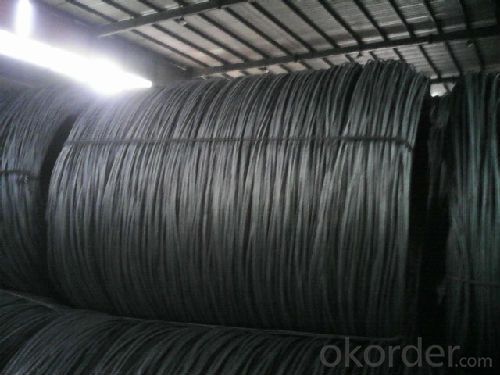
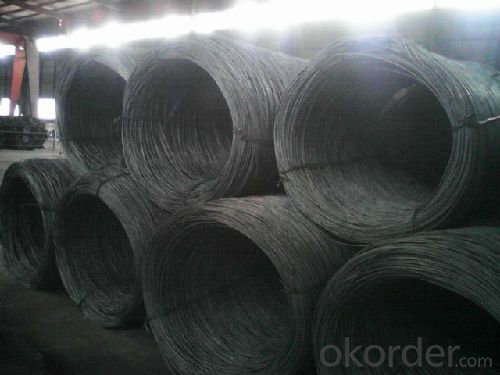
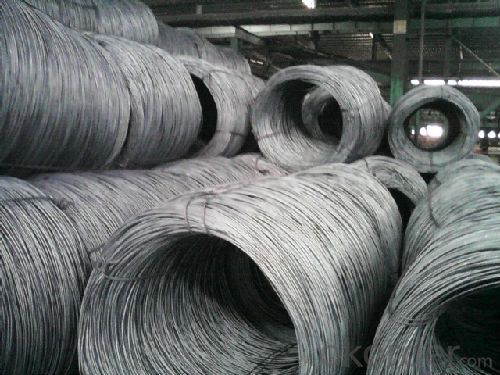
- Q: How is steel wire rod used in the manufacturing of wire for bicycle chains?
- Steel wire rod is a crucial component in the manufacturing of wire for bicycle chains. It serves as the primary raw material for producing the wire used in bicycle chains. The steel wire rod is usually made from carbon or alloy steel and has specific properties that make it ideal for this application. To manufacture wire for bicycle chains, the steel wire rod undergoes several processes. The first step involves drawing the wire rod through a series of dies to reduce its diameter and increase its length. This process is known as wire drawing and helps to improve the wire's strength, flexibility, and surface finish. After wire drawing, the wire is typically heat-treated to enhance its mechanical properties further. This heat treatment process, known as annealing, involves heating the wire to a specific temperature and then cooling it slowly. Annealing helps to increase the wire's hardness, toughness, and resistance to wear, making it more durable for use in bicycle chains. Once the wire is appropriately treated and processed, it is then formed into the desired shape for bicycle chains. This involves bending or cutting the wire into individual links, which are then interlocked to create the chain. The wire's strength and flexibility are crucial during this process, as it needs to withstand the tension and stress applied when the chain is in use. Overall, steel wire rod plays a vital role in the manufacturing of wire for bicycle chains. Its high strength, durability, and flexibility properties make it an ideal material for this application. The processes of wire drawing, heat treatment, and shaping ensure that the wire meets the necessary requirements for a reliable and long-lasting bicycle chain.
- Q: What are the standard bending requirements for steel wire rod?
- The standard bending requirements for steel wire rod typically depend on the specific industry or application in which the wire rod is being used. However, there are certain general guidelines and specifications that are commonly followed. One of the key factors in determining the bending requirements is the diameter or gauge of the steel wire rod. Thicker wire rods generally require a larger bending radius compared to thinner ones. This is to ensure that the wire rod does not undergo excessive strain or deformation during the bending process. Another important consideration is the type of steel used in the wire rod. Different types of steel have varying levels of ductility and tensile strength, which can impact the bending requirements. It is crucial to adhere to the manufacturer's specifications and guidelines to ensure the wire rod is not subjected to excessive stress or damage during bending. In addition to these factors, industry standards and regulations may also dictate specific bending requirements for steel wire rods. For example, the American Society for Testing and Materials (ASTM) has established standards such as ASTM A510 which provides guidelines for the carbon steel wire rod used in various applications. Ultimately, the standard bending requirements for steel wire rod will depend on factors such as the diameter, type of steel, and industry standards. It is essential to consult relevant specifications and guidelines to ensure proper bending procedures are followed, thus maintaining the integrity and functionality of the wire rod.
- Q: How is steel wire rod used in the manufacturing of musical instrument strings?
- Steel wire rod is used in the manufacturing of musical instrument strings as it provides the core strength and durability needed for the strings to produce the desired pitch and sustain. The wire rod is typically drawn and twisted to form the inner core of the string, which is then wrapped with other materials such as nickel, bronze, or silver to enhance tone and playability. Additionally, the steel wire rod allows for precise tension adjustments, ensuring that the strings can be finely tuned to meet the specific requirements of each musical instrument.
- Q: How is steel wire rod used in the manufacturing of wire forms for agricultural fencing?
- Steel wire rod is used in the manufacturing of wire forms for agricultural fencing by being transformed into various wire shapes and gauges. It can be straightened, cut, and then either woven or welded into the desired fence forms. The high tensile strength of steel wire rod provides durability and resistance, making it suitable for withstanding the pressure and impact that agricultural fencing may encounter.
- Q: What are the main challenges in manufacturing steel wire rod?
- Some of the main challenges in manufacturing steel wire rod include ensuring consistent quality and strength, maintaining a high level of productivity, managing energy consumption and environmental impact, and addressing safety concerns in the production process. Additionally, market fluctuations and competition pose challenges in terms of pricing and meeting customer demands.
- Q: What are the main factors influencing the choice of steel wire rod order lead time?
- The main factors influencing the choice of steel wire rod order lead time include market demand and availability, production capacity, transportation logistics, supplier lead times, and customer preferences.
- Q: What are the common production processes for zinc-coated steel wire rod?
- The common production processes for zinc-coated steel wire rod include drawing, annealing, galvanizing, and cooling.
- Q: What is the hardness range of steel wire rod?
- The hardness range of steel wire rod typically varies between 35 to 55 on the Rockwell C scale.
- Q: How is steel wire rod used in the manufacturing of wire for power generation systems?
- Steel wire rod is a crucial component in the manufacturing of wire for power generation systems as it serves as the raw material used to produce high-quality wires. These wires are then utilized in various applications within power generation systems, such as electrical transmission lines, cables, and conductors. The strength, durability, and conductivity of steel wire rod make it ideal for ensuring efficient power transmission and reliable performance in these systems.
- Q: How is steel wire rod coated to prevent corrosion?
- There are several ways to prevent corrosion on steel wire rod. Galvanization is a common method, where the wire rod is dipped into molten zinc. This creates a protective layer that acts as a barrier between the steel and the corrosive elements in the environment. Another method involves applying different types of polymer coatings. These coatings can be sprayed, dipped, or electrostatically applied onto the wire rod. By doing so, a barrier is formed to prevent moisture and other corrosive substances from reaching the steel surface. In some cases, wire rods can be coated with a combination of zinc and polymer coatings to provide even greater protection against corrosion. The specific coating method chosen depends on factors such as the intended use of the wire rod and the level of corrosion resistance needed.
Send your message to us
Steel Wire Rod from 5.5mm to 14mm thickness Cold-heading
- Loading Port:
- Tianjin
- Payment Terms:
- TT OR LC
- Min Order Qty:
- 30 m.t.
- Supply Capability:
- 100000 m.t./month
OKorder Service Pledge
OKorder Financial Service
Similar products
Hot products
Hot Searches
Related keywords
